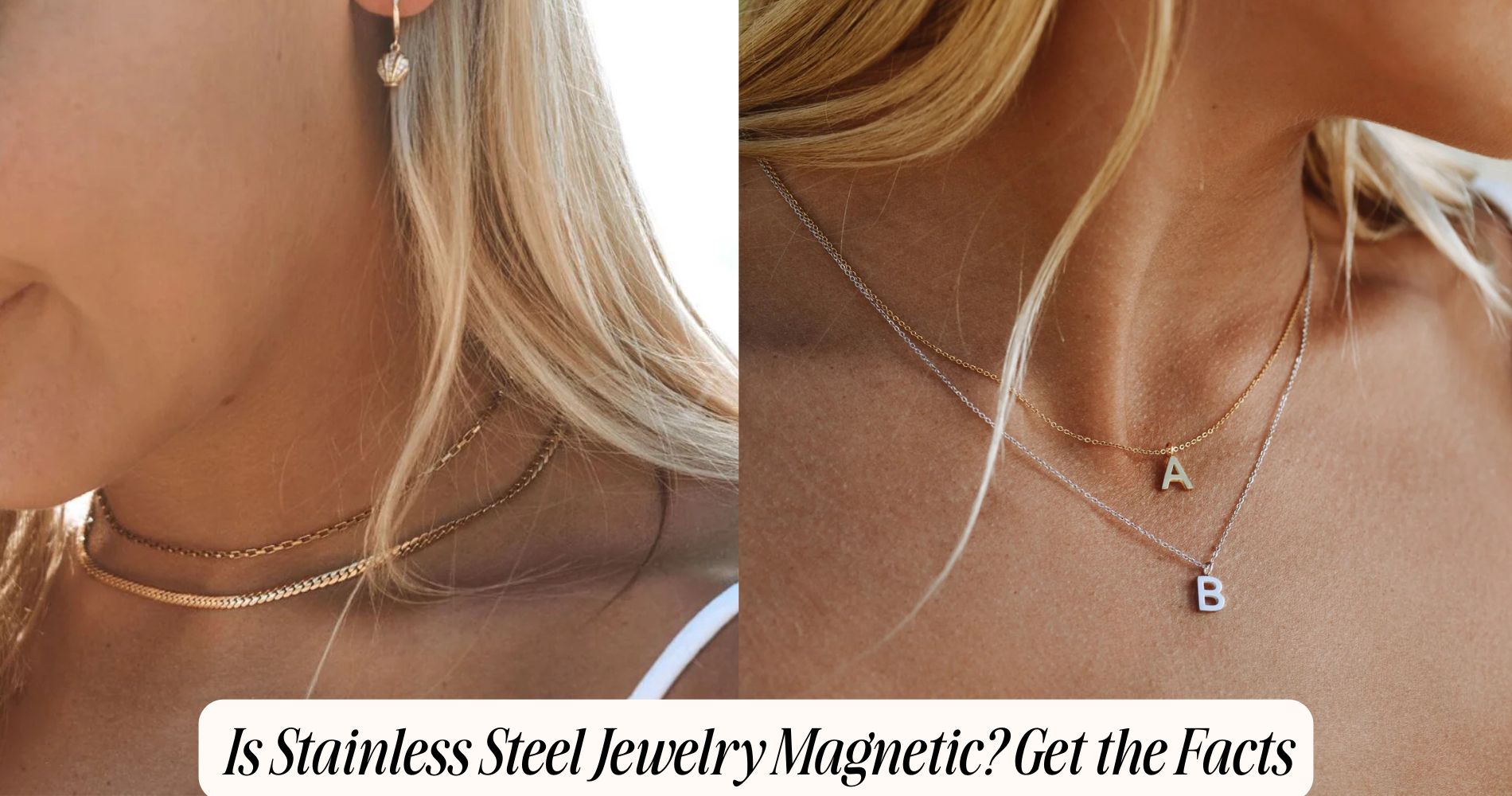
Is Stainless Steel Jewelry Magnetic? Get the Facts
Is stainless steel jewelry magnetic? The answer depends on the alloy composition of the stainless steel. Austenitic stainless steel, such as grades 304 and 316L, is generally non-magnetic due to its high nickel content, though cold-working can make it slightly magnetic. On the other hand, ferritic and martensitic stainless steels are typically magnetic because of their higher iron content. This variation means that not all stainless steel jewelry is the same, and understanding the specific grade can help guide your choice. If you're looking for sleek and durable options, explore our Simple Stainless Steel Necklace collection for inspiration.
Understanding Stainless Steel Composition
To grasp whether stainless steel jewelry is magnetic, it's essential to understand its composition. Stainless steel consists primarily of iron, along with chromium, nickel, and other elements that form stainless steel alloys. The specific ratios of these metals greatly influence the material's magnetic properties and corrosion resistance.
Generally, stainless steel can be categorized into two main groups: austenitic and martensitic alloys. Austenitic stainless steel, which contains higher levels of nickel, tends to exhibit non-magnetic properties. This means that if you're wearing jewelry made from austenitic stainless steel, it likely won't attract magnets.
On the other hand, martensitic stainless steel, with its higher carbon content, can be magnetic.
Corrosion resistance is another essential aspect of stainless steel's composition. The presence of chromium creates a passive layer that protects the metal from oxidation and rust. This feature is especially important for jewelry, as you want it to maintain its appearance over time.
Therefore, understanding the types of stainless steel alloys and their characteristics helps you determine whether your jewelry is magnetic while appreciating its durability against corrosion.
Types of Stainless Steel
Understanding the types of stainless steel is essential in determining the magnetic properties of your jewelry. Stainless steel comes in various grades, each with unique characteristics that affect not only appearance but also magnetism. The most common grades used in jewelry are 304 and 316L.
Grade 304 is often non-magnetic but can exhibit some magnetism when cold-worked. It's popular for its resistance to corrosion and high durability, making it a solid choice for everyday wear.
On the other hand, grade 316L is even more resistant to corrosion and is typically used in marine environments. This grade tends to be non-magnetic, making it an excellent option for those who prefer non-magnetic jewelry.
When caring for your stainless steel jewelry, knowing its grade can help you choose the right cleaning methods. While most stainless steel is resistant to tarnish and rust, using abrasive cleaners on lower grades may lead to scratches.
Always check the specific care instructions for your jewelry to maintain its appearance and longevity. Understanding these stainless steel grades helps you make informed choices for both style and practicality in your jewelry collection.
Magnetic Properties Explained
Many people wonder about the magnetic properties of stainless steel jewelry, and it's important to know that these properties can vary based on the specific grade and composition of the metal.
Stainless steel is primarily composed of iron, chromium, and nickel, but the proportions of these elements considerably influence its magnetic characteristics.
When exposed to a magnetic field, certain types of stainless steel can exhibit magnetic properties. For instance, ferritic and martensitic stainless steels, which contain higher levels of iron, are generally magnetic.
In contrast, austenitic stainless steels, the most common type used in jewelry, tend to be non-magnetic due to their nickel content and crystal structure.
It's essential to understand that even within these categories, variations in metal alloys can lead to different magnetic behaviors.
For example, some austenitic alloys might display slight magnetism if they've been cold-worked.
Consequently, if you're considering stainless steel jewelry, keep in mind that the magnetic properties can differ based on the specific alloy used.
This knowledge can help you make informed decisions about your jewelry choices.
Common Myths Debunked
You might've heard various myths about the magnetic properties of stainless steel jewelry, and it's important to set the record straight.
One common misconception is that all stainless steel is magnetic. In reality, the magnetic properties depend on the specific alloy. Most stainless steel jewelry, particularly 316L, is generally non-magnetic, while certain grades can exhibit magnetic characteristics due to their composition.
Another myth is that if your stainless steel jewelry is magnetic, it must be of poor quality. This isn't true; magnetic properties can arise from the manufacturing process or the type of stainless steel used. It's crucial to differentiate between quality and magnetic properties when evaluating your jewelry.
Some people believe that stainless steel requires special care due to its magnetic nature, which is also a misconception. Jewelry care for stainless steel is straightforward—regular cleaning with mild soap and water suffices.
Understanding these stainless steel misconceptions helps you make informed decisions about your jewelry. By debunking these myths, you can appreciate the durability and beauty of stainless steel without unnecessary worries about its magnetic properties.
Frequently Asked Questions
Can Stainless Steel Jewelry Cause Allergic Reactions?
Stainless steel jewelry typically contains hypoallergenic materials, reducing the risk of allergic reactions. However, some individuals may still experience stainless steel allergies due to specific elements like nickel, so it's crucial to choose jewelry carefully.
How Should I Clean Stainless Steel Jewelry?
To clean stainless steel jewelry, use mild soap and warm water for effective cleaning methods. Regular maintenance keeps your pieces shiny and prevents tarnishing, ensuring they remain beautiful and durable for years to come.
Is Stainless Steel Jewelry Suitable for Everyday Wear?
Yes, stainless steel jewelry is perfect for everyday wear. Its durability benefits guarantee it withstands daily use, while its fashion versatility allows you to pair it easily with various styles, making it a smart choice.
Does Stainless Steel Jewelry Tarnish Over Time?
Stainless steel jewelry generally resists tarnishing due to its composition. However, neglecting stainless steel care can initiate the tarnishing process. Regular cleaning and proper storage help maintain its shine and prevent any discoloration over time.
Can Stainless Steel Jewelry Be Resized?
Yes, you can resize stainless steel jewelry, though options may be limited. It's best to consult professional services, as they can provide precise resizing solutions without compromising the piece's integrity or design.
Conclusion
In summary, while some stainless steel jewelry can be magnetic due to its composition, not all types exhibit this property. By understanding the different grades of stainless steel and their magnetic characteristics, you can make informed choices when selecting non-magnetic options. It's important to take into account the specific alloy used in your jewelry to avoid misconceptions. Ultimately, knowing these facts helps you enjoy your stainless steel pieces without any surprises regarding their magnetic behavior.
























Leave a comment
This site is protected by hCaptcha and the hCaptcha Privacy Policy and Terms of Service apply.